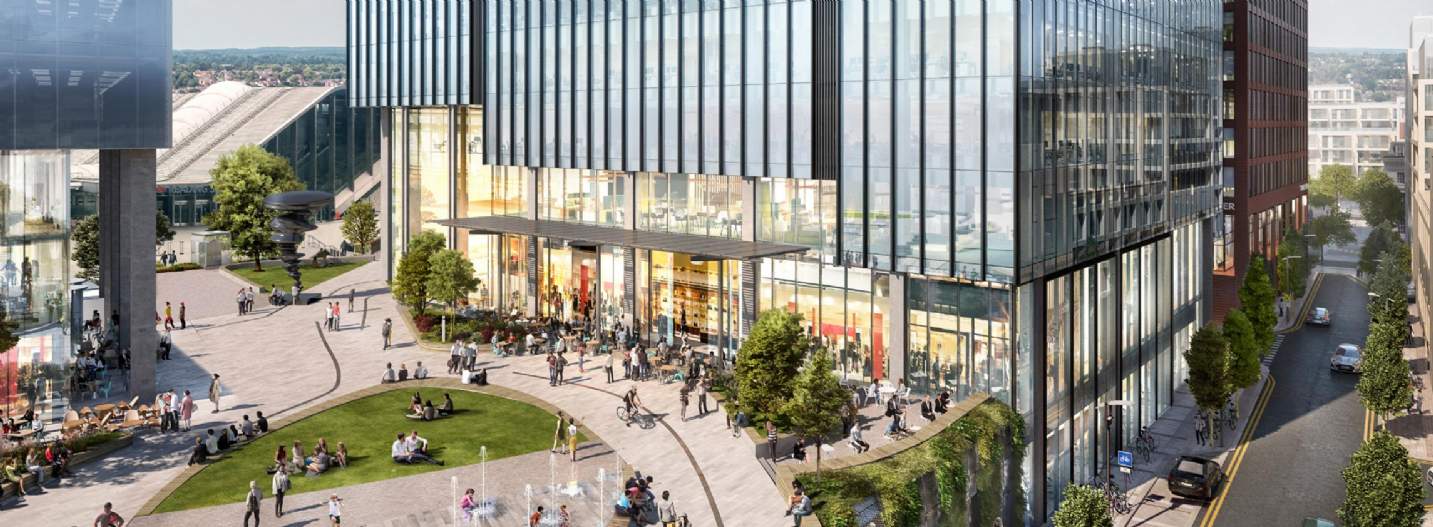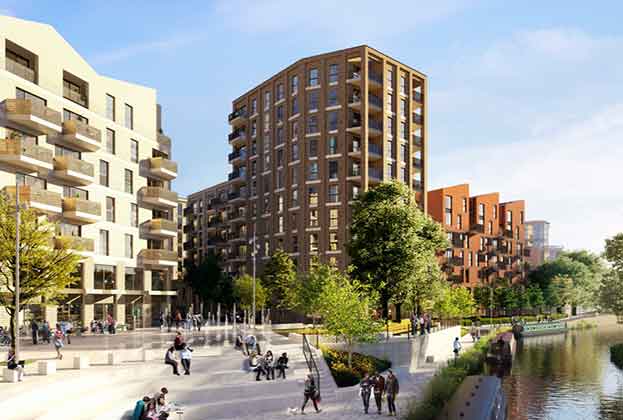With a growing population and strong connecting links to the capital, the Berkshire town is one of the South East’s key residential and commercial markets
Reading is set for growth
Despite being passed over again in 2022 in its bid for city status, Reading continues to operate as one of the key residential and commercial markets in the South East. Its population is projected to reach over 165,000 people by 2030, while continued strength in IT and communications industries is expected to drive economic growth over the next decade well above the UK average.
Economic strengths
Employment in Reading is forecast to grow by 14% by the end of the decade according to Oxford Economics. The town’s economy is dominated by the Professional, Scientific & Tech, and Information & Communication sectors, with a combined GVA of £3.3 billion. These sectors are anticipated to continue to expand, with the EY Regional Economic forecast predicting that Reading will be the fastest-growing location in the country between 2024 and 2026.
The chronic lack of available lab space across the London–Oxford–Cambridge ‘golden triangle’, with the vacancy rate currently standing at 7% in Oxford and below 1% in Cambridge, provides the opportunity for Reading to capitalise on the expansion of the science sector. Reading has historically attracted the major life science companies, including Bayer at Green Park, albeit mostly with an HQ office function rather than R&D. However, there has been increasing interest from major global life science companies for a presence in Reading with R&D functions, likely to be focused on edge of town locations like Thames Valley Science Park and Green Park. Reading’s position equidistant between Oxford and London will attract occupiers struggling to satisfy their real estate requirements in those markets.
The film and television industry is continuing to expand, with combined spend by film and high-end television (HETV) production reaching £6.27 billion in 2022 according to the British Film Institute (BFI), which was the highest level ever recorded for the UK. Reading’s presence within the sector is continuing to grow, highlighted by the cluster of new film studios opening in or close to the town. Shinfield Studios, located in Lower Earley, will comprise just under 1 million sq ft of studio space alongside a bespoke office environment with post-production facilities.
The technology industry continues to be a key growth sector in Reading, highlighted by the sector acquiring the highest quantum of office space in the Reading market in 2022, leasing a total of 121,000 sq ft, over half of Reading’s office take-up
Emily Williams, Director, Residential Research
The partnership with the University of Reading and Wokingham Borough Council will boost employment and engagement opportunities, which will strengthen the future talent pool for the sector. Stage Fifty is opening its second film studio in the UK at Winnersh Triangle Business Park. This comprises of 120,000 sq ft of studio space, 25,000 sq ft of office space and 50,000 sq ft of workshops.
The technology industry continues to be a key growth sector in Reading, highlighted by the sector acquiring the highest quantum of office space in the Reading market in 2022, leasing a total of 121,000 sq ft, over half of Reading’s office take-up. Reading’s technology cluster has attracted new inward movers, with 80% of new entrants to the town being occupiers from this sector. Amazon opened a new office at 400 Brook Drive, Green Park where they leased 49,000 sq ft, adding to the cluster of both SME and multinational technology occupiers already based there. There has also been expansion of demand from existing occupiers. The cyber security company Rapid7 leased 22,600 sq ft at 2 Forbury Place, nearly doubling the space they previously occupied at Arlington Business Park. The relocation and expansion was driven by business growth as they look to become more dominant in the UK market.
Reading is not necessarily a location synonymous with venture capital (VC) funded companies. In the decade, up to and including 2020, Reading recorded an annual average of £34 million of VC raised by companies that are headquartered in the town. For the 2021–2022 period, this average was £105 million per annum – over 210% higher than the long-run average. Around 50 companies had a VC fundraise in this recent two-year period with the dominant sub-sector being software. This plays to the strength of Reading, during the past few decades, and shows the quality of talent in the town.

Changing structure
The population of Reading is forecast to grow by 0.7% over the next ten years, below the average projected growth for England. However, the changing structure of the population will pose some interesting challenges for the town. The 15–24 age band is projected to become the largest population group by 2033, accounting for over 17% of the population. Much of this growth is expected to be driven by those in their early twenties, reflecting Reading’s strength both in higher education and as a destination for graduate employment. Strong growth of 3.2% is also expected in the over 65-age group, suggesting potential growing demand for downsizer properties.
In contrast, the population aged between 25 and 50 is set to drop by 4.8% over the next ten years. Combined with a drop in under 15s over the same period, this suggests that Reading is becoming a less attractive location for families. A driver of this change may be the increasing unaffordability of the area for homeowners, with the latest average house-price-to-income ratio at a high of 9.41.
An educated workforce
Much of Reading’s economic strength is based on its strong graduate employment. The University of Reading has developed global expertise in areas including climate science, agriculture and food science, and has an undergraduate population of 12,500. Reading retained around 8% of the graduates of the university in 2021, a relatively low proportion compared to other locations in the South East.
However, it successfully attracts graduates who have studied elsewhere; 30% of graduates working in the town are those originally from Reading who moved back after their studies, and 50% both lived and studied elsewhere before being drawn to the town by job opportunities. Maintaining a strong pool of graduates will be important to the town’s ability to continue attracting high-quality commercial occupiers, particularly in the tech sector.
Read the articles within Spotlight: Reading – positioned for growth below.



